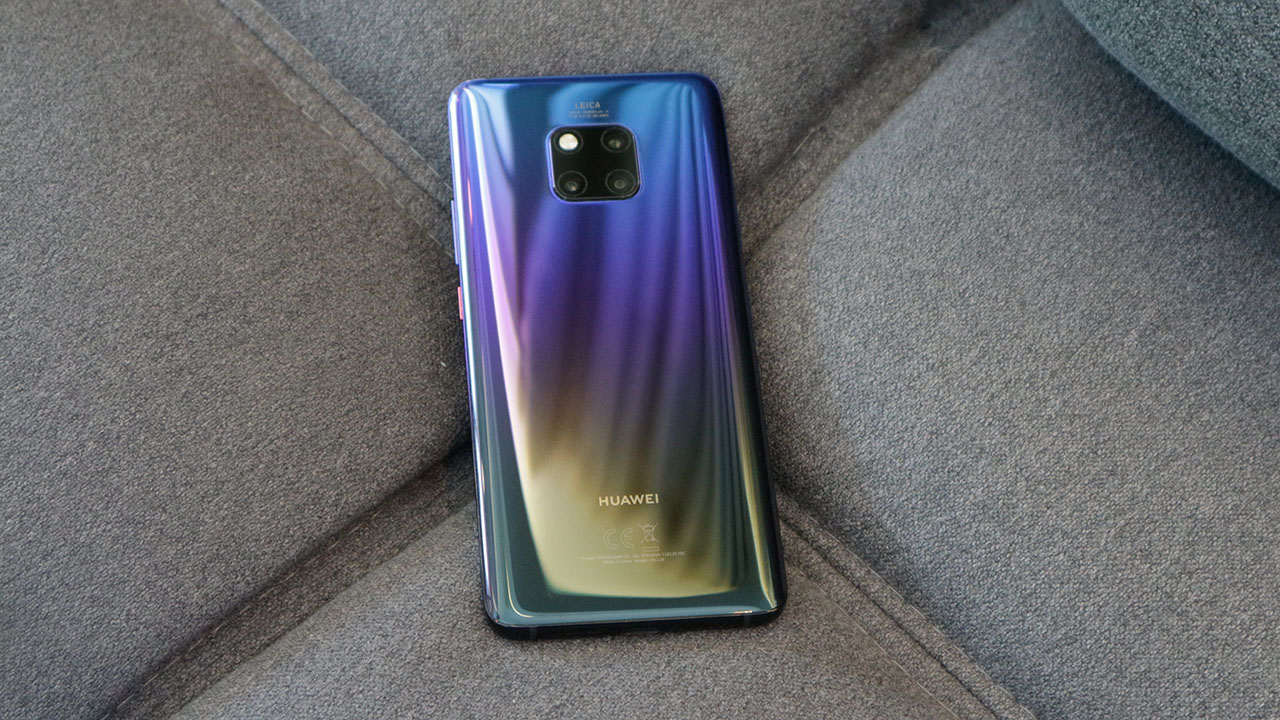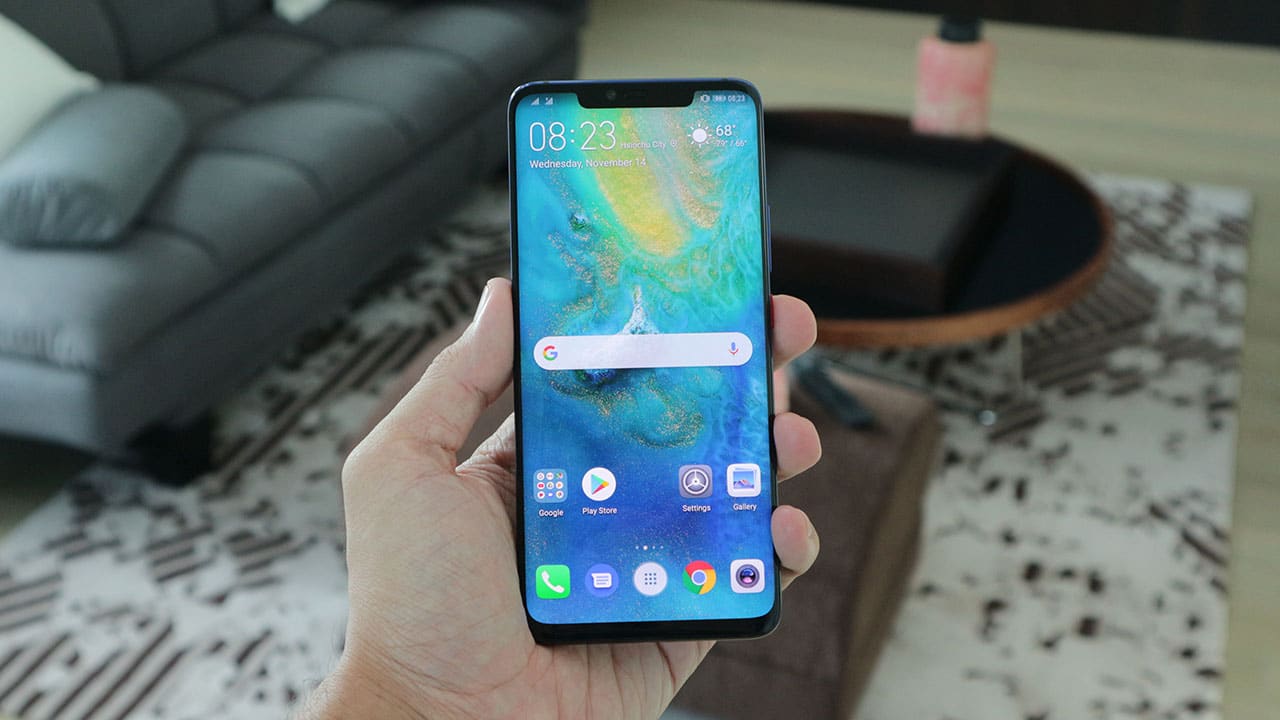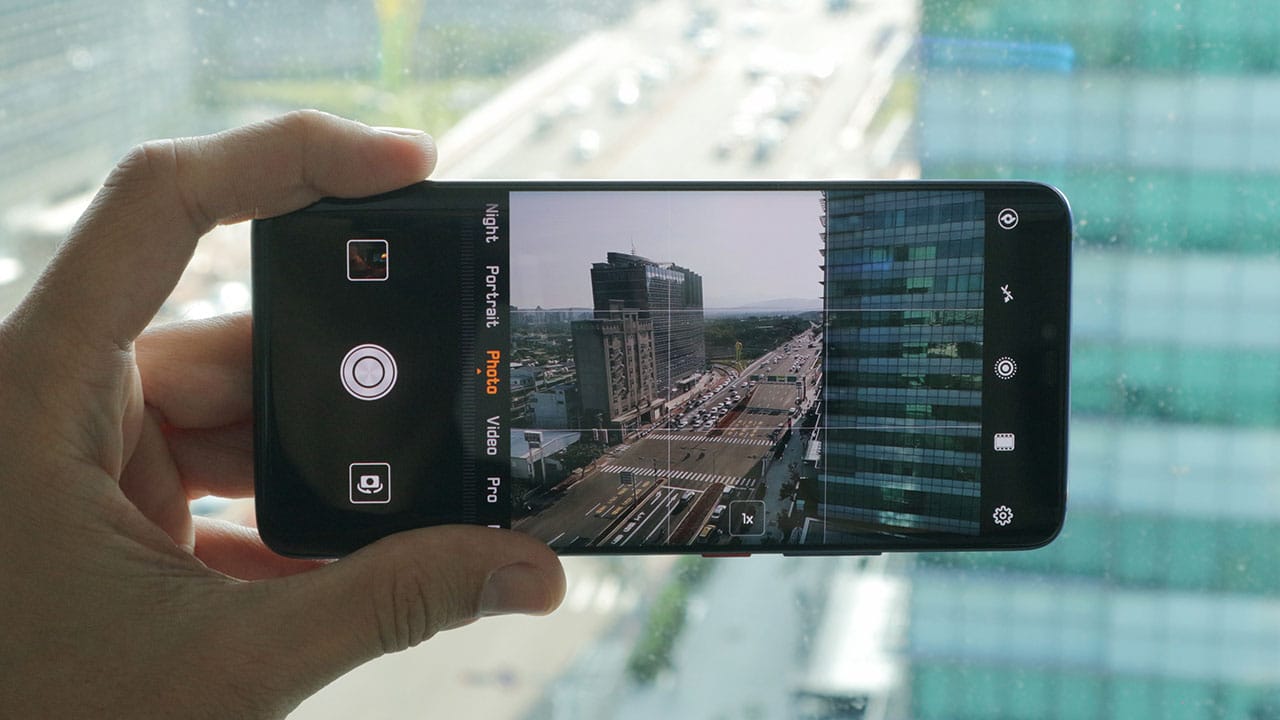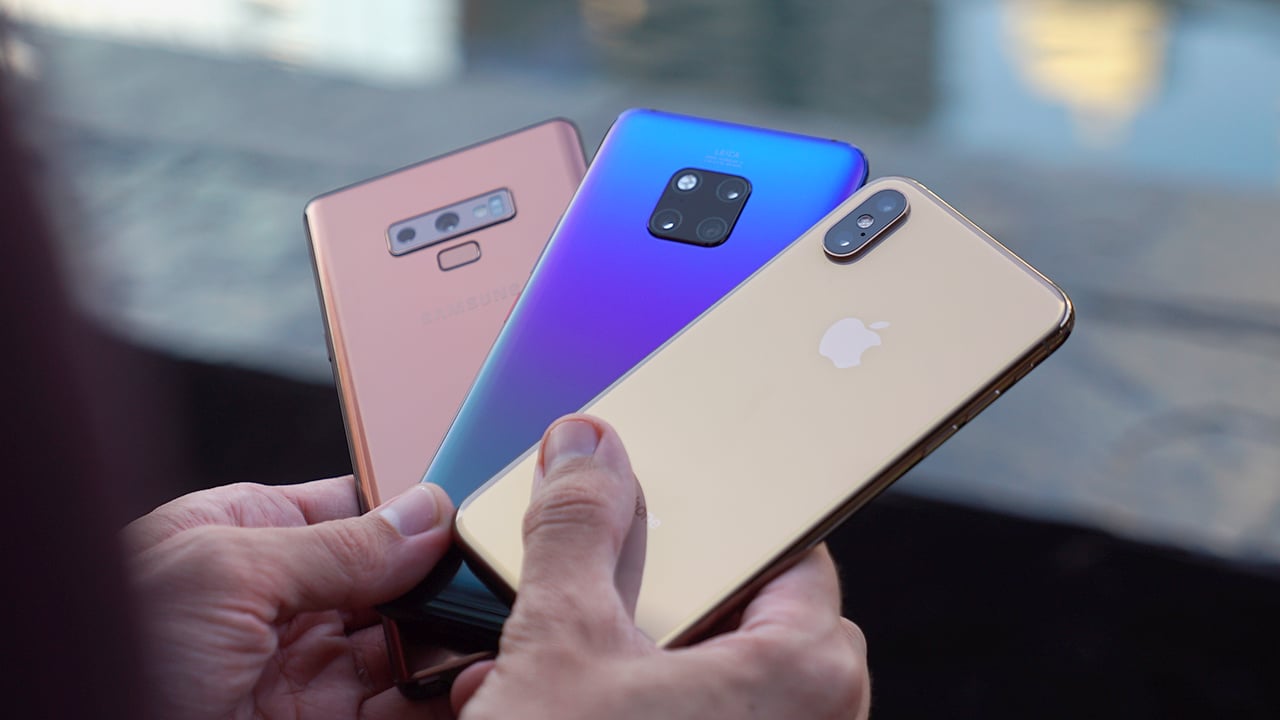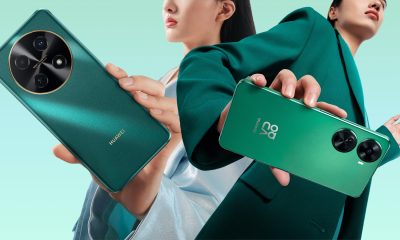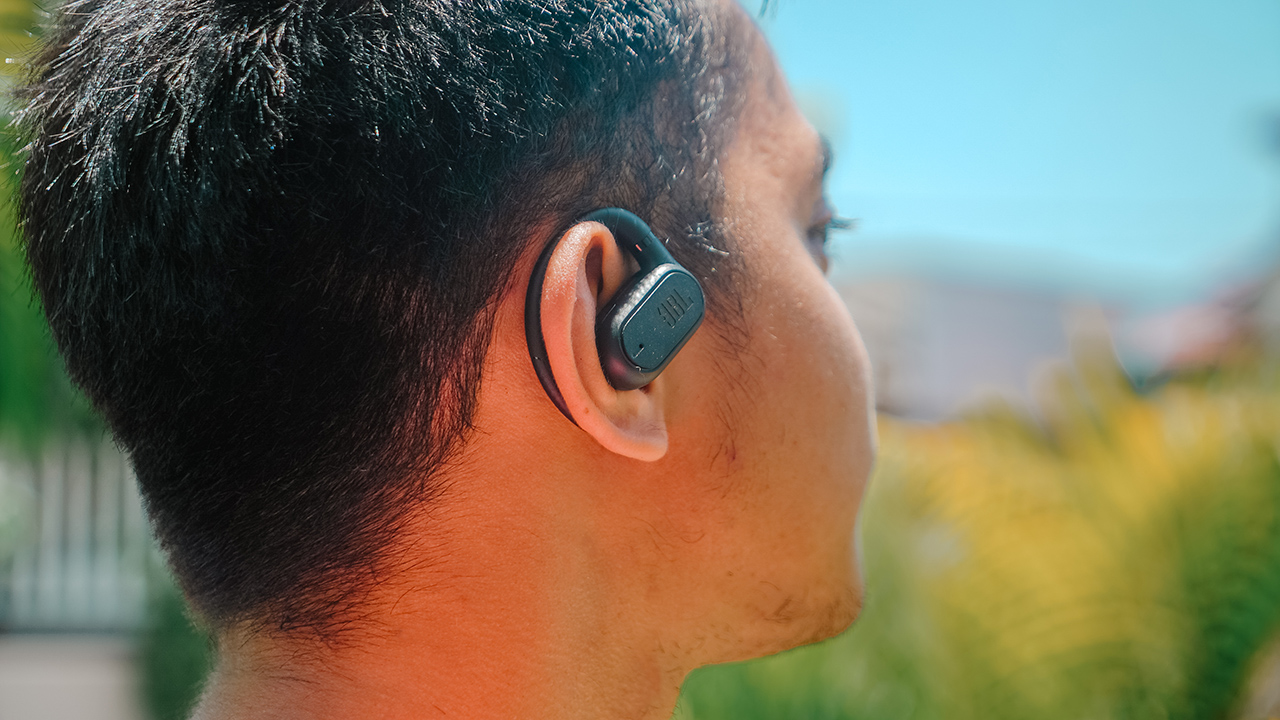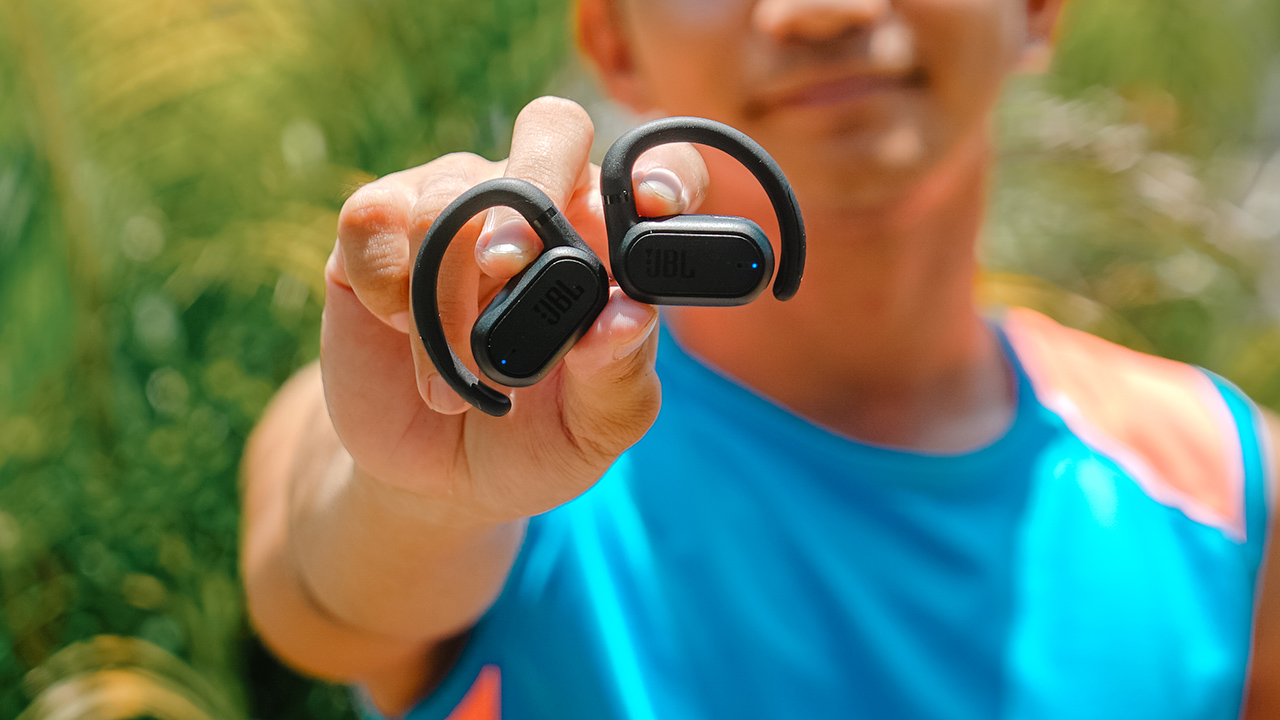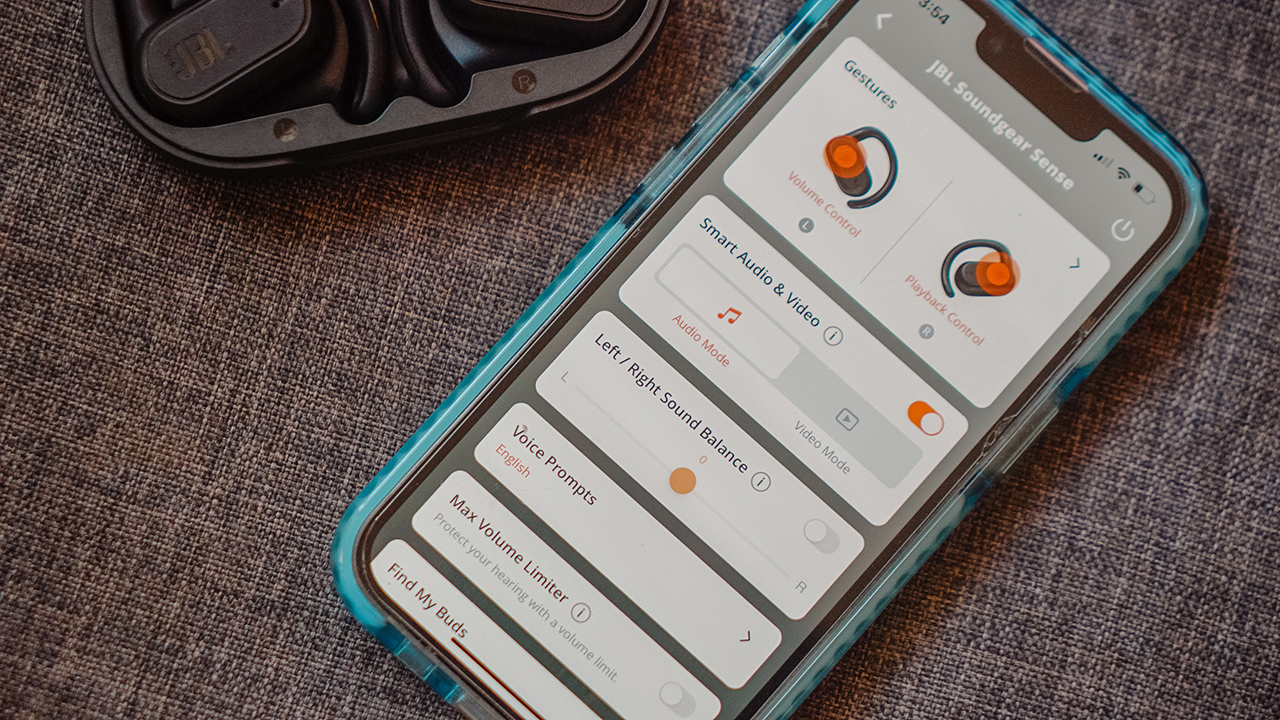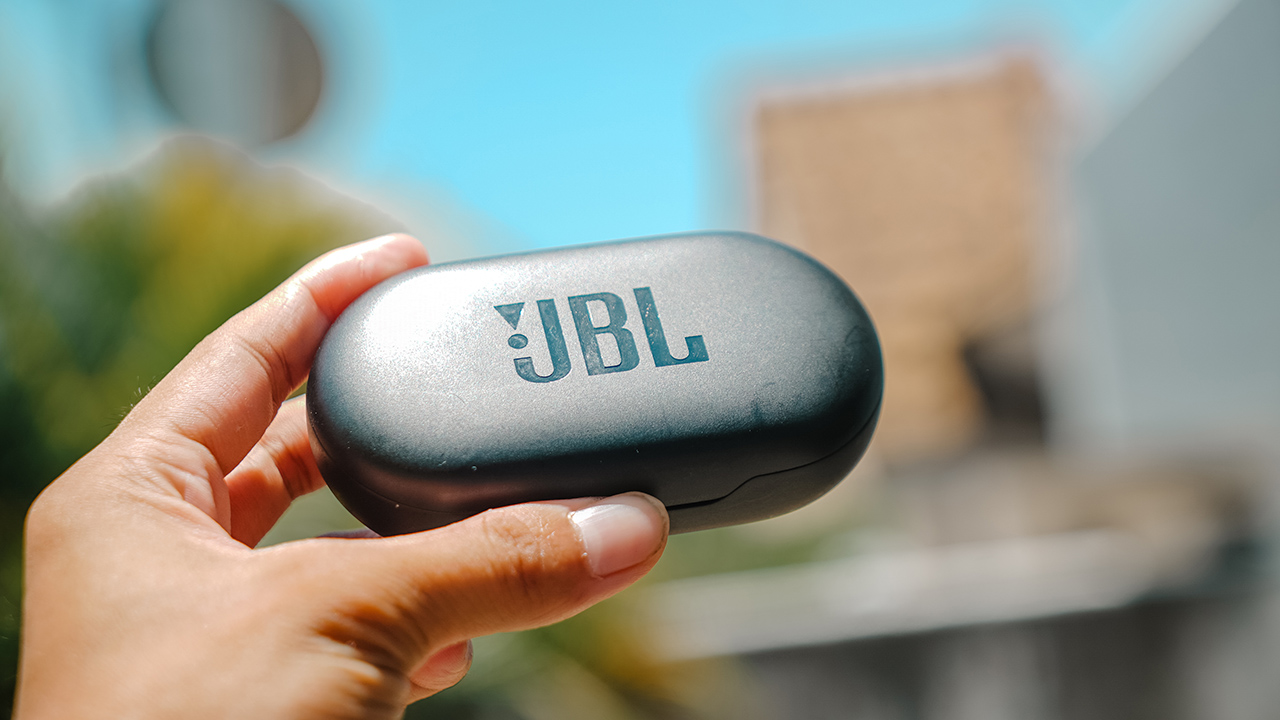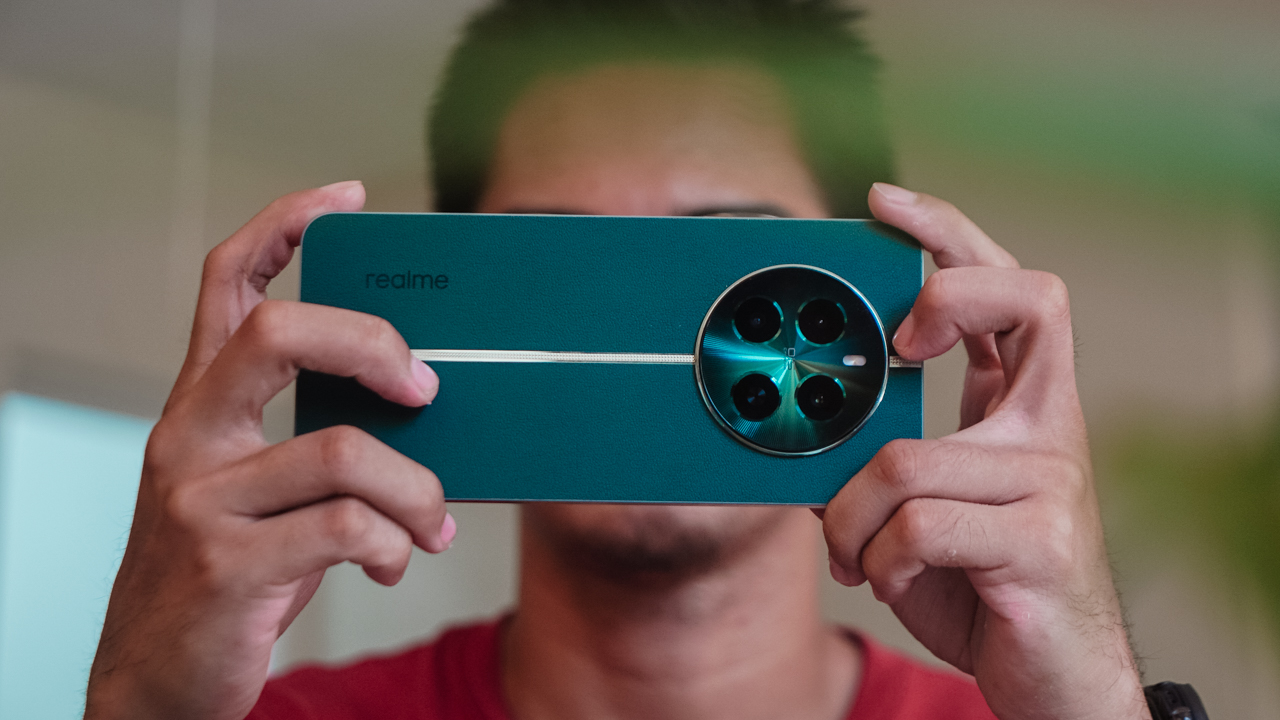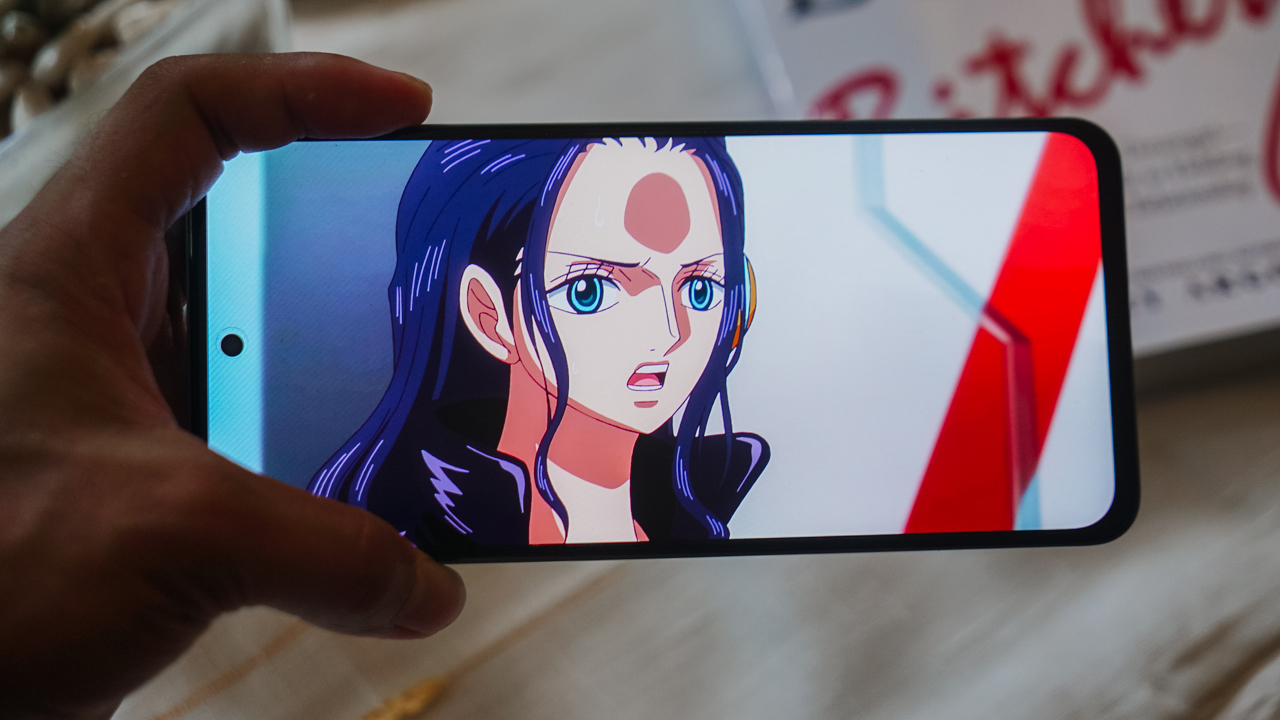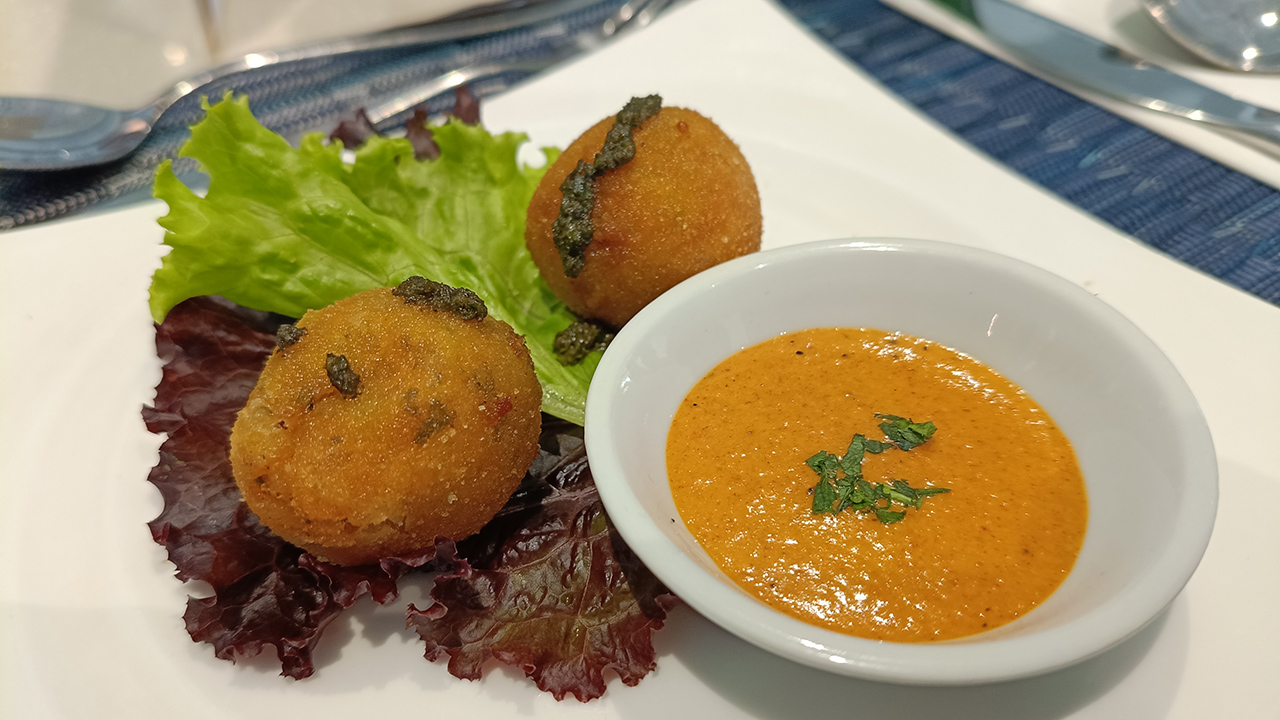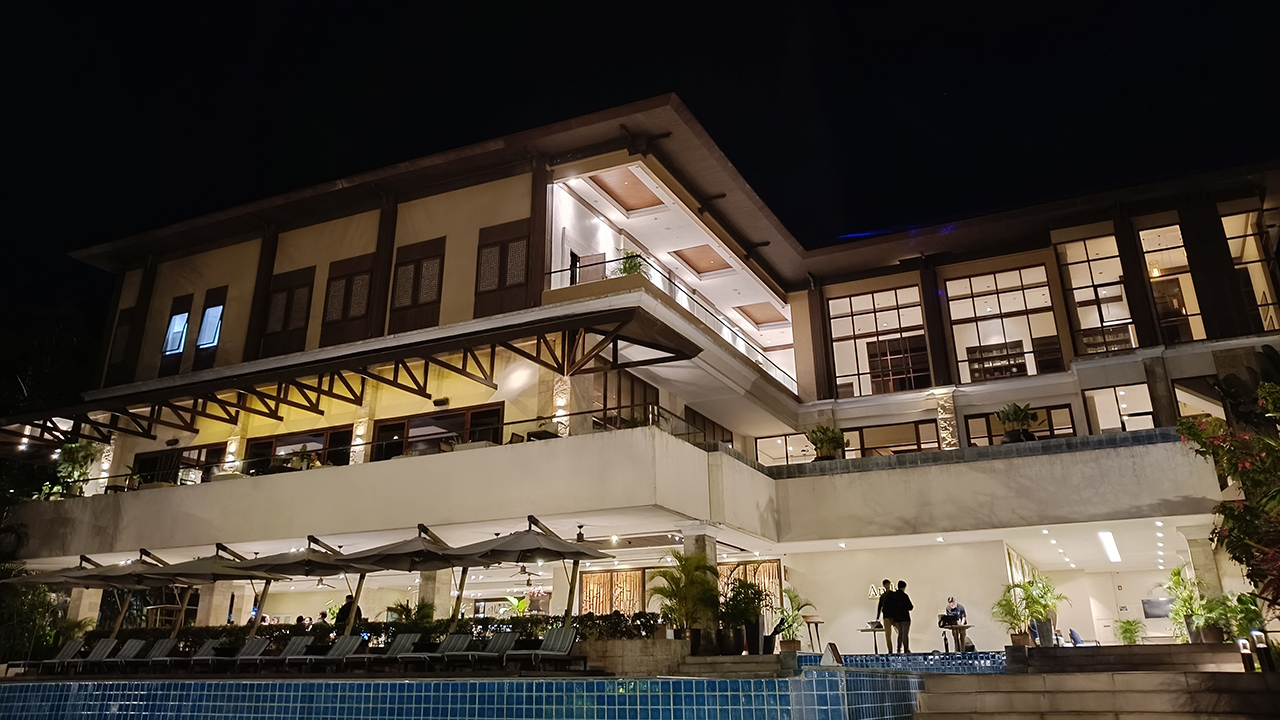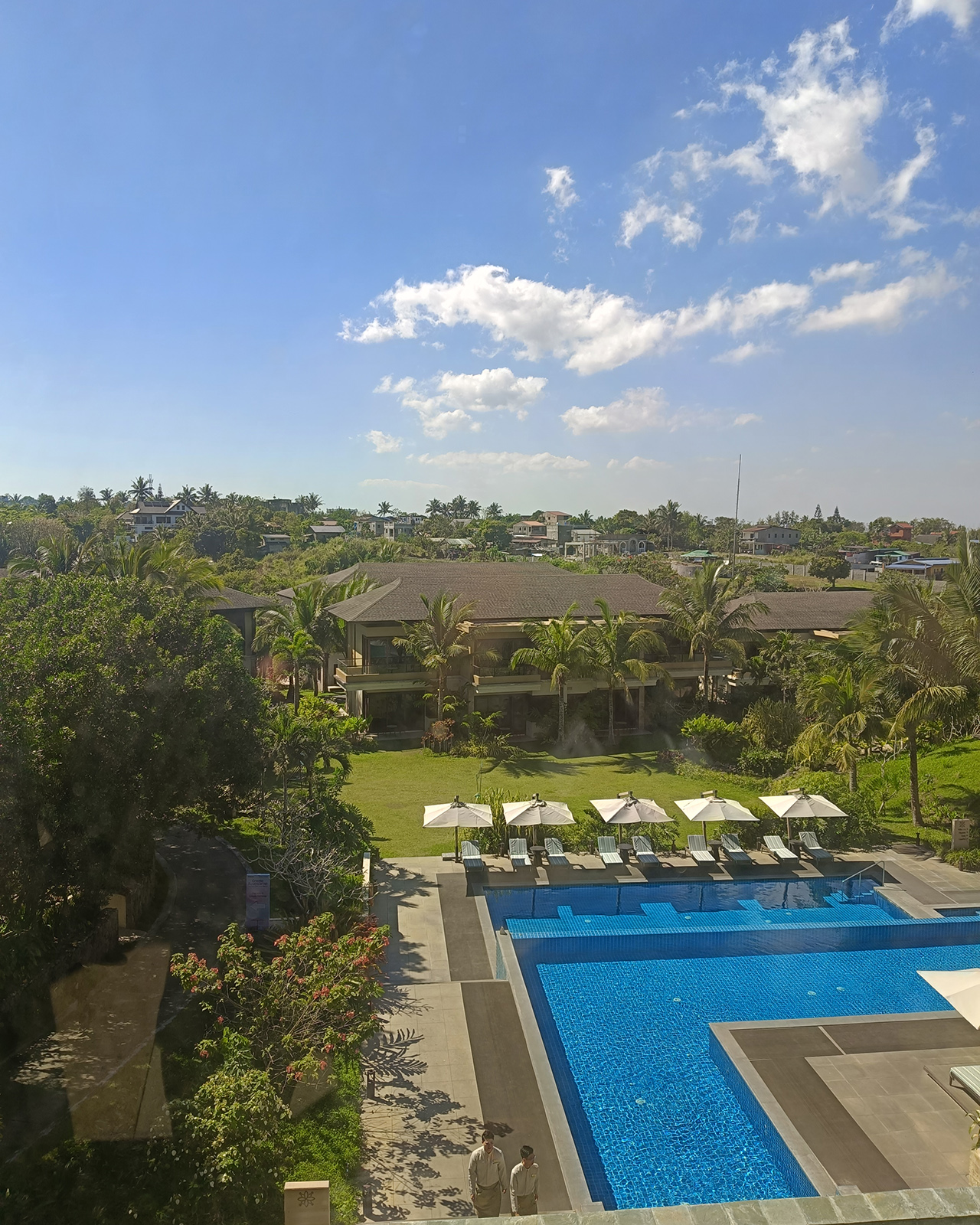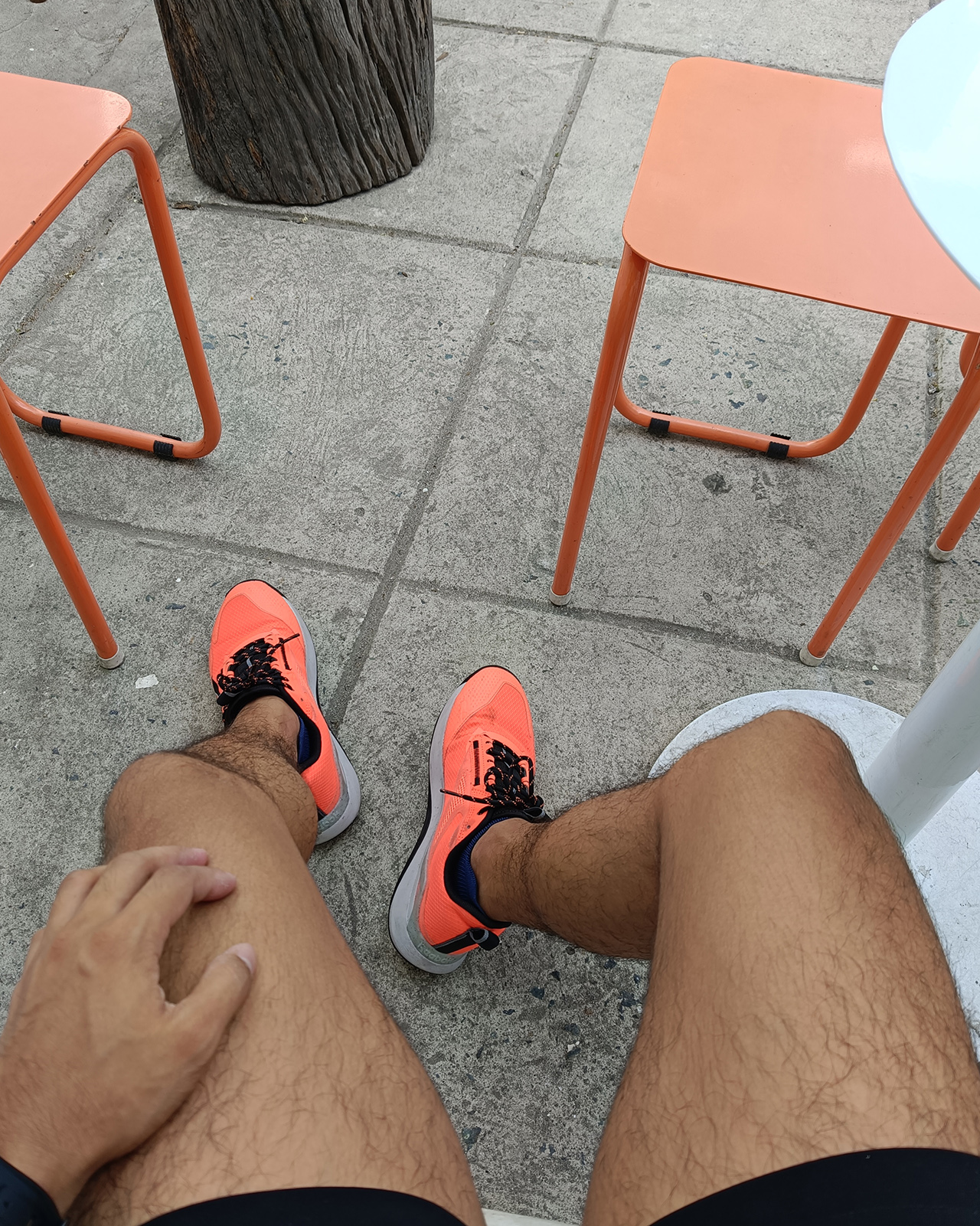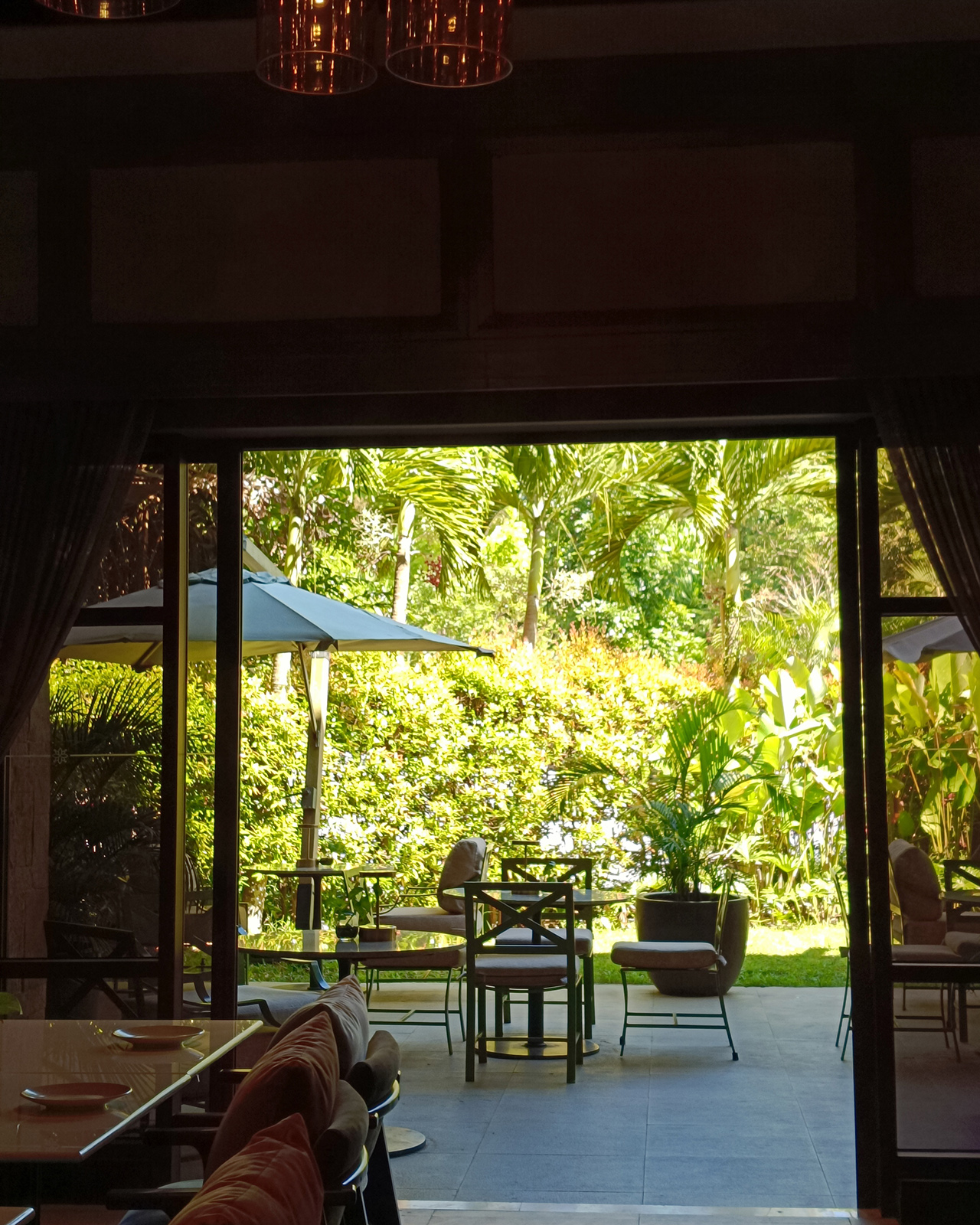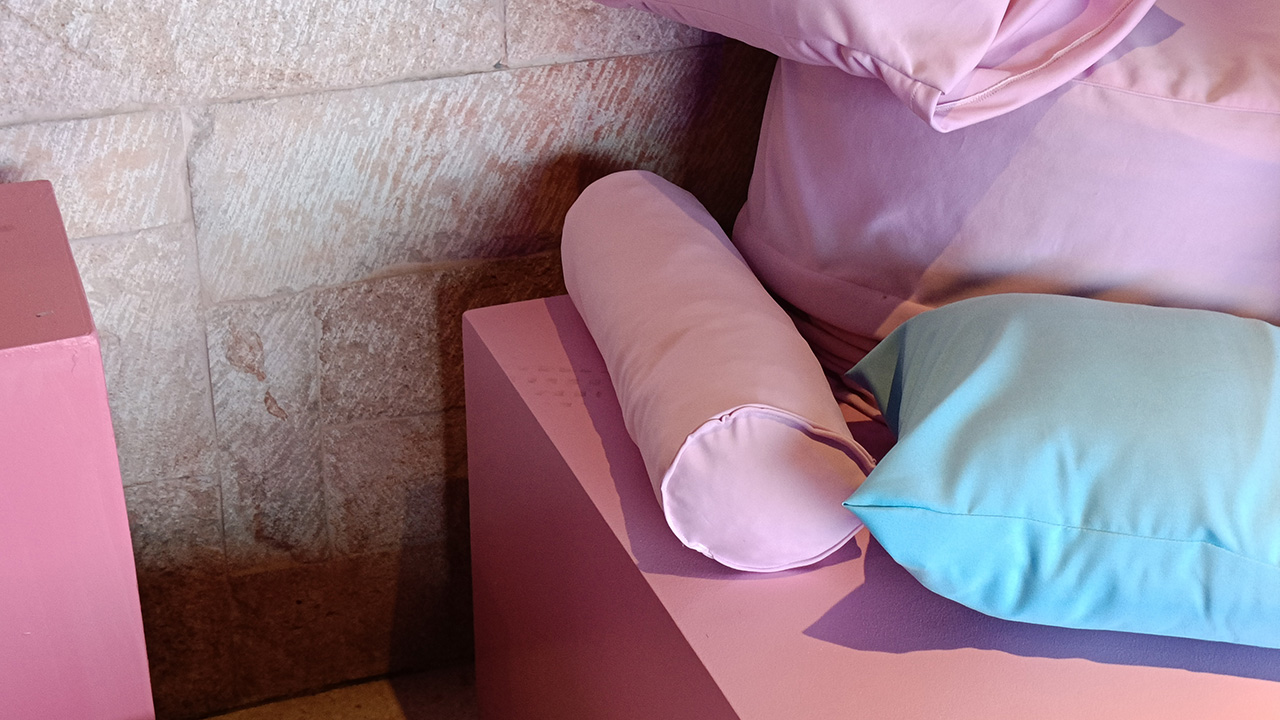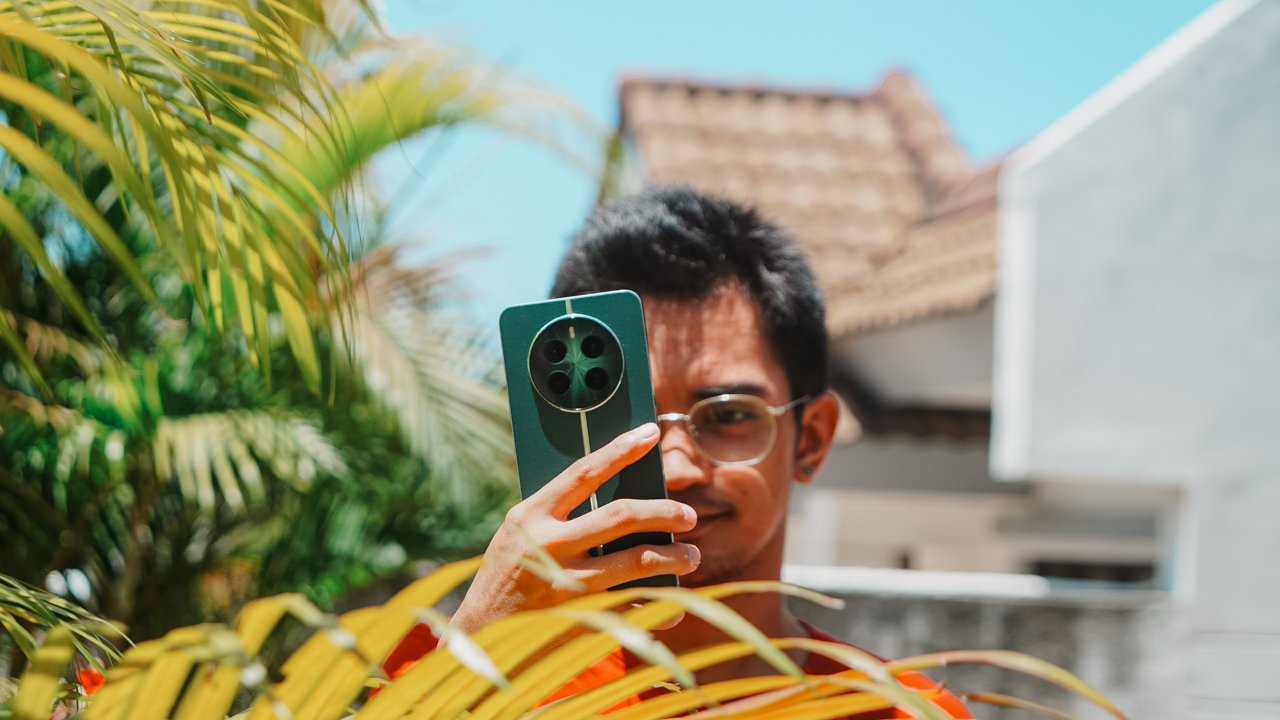
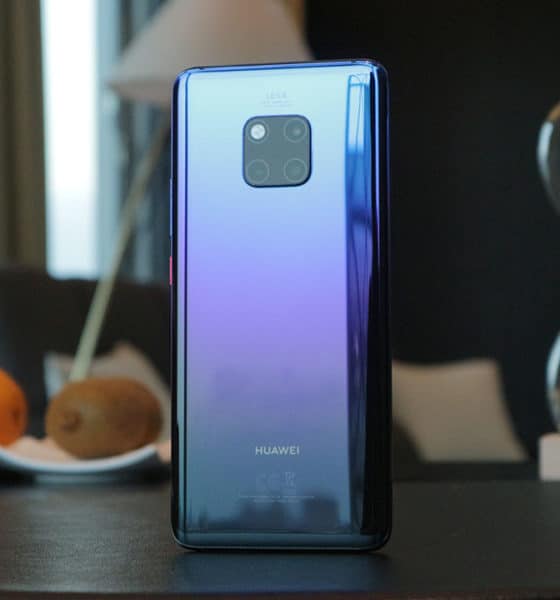
When I first got my hands on the Mate 20 Pro, I wondered to myself: Where do I even start?
Even after spending over a month with the phone and checking out its less feature-packed sibling, I still can’t help but be amazed by how much tech Huawei jammed into this thing.
It’s not even debatable; comparing the Mate 20 Pro to any other phone released this year would make the opposite side look stale. Inside and out, this is the most complete smartphone ever assembled.
Of course, that doesn’t mean it’s perfect. While Huawei focused so hard on one-upping its fiercest rivals, some old weaknesses showed up and new issues arose in the process.
Going through every single feature would be too much for a single article, however. I could easily surpass the monstrous word count of our iPhone XS review if I were to get overly thorough and technical.
Instead, it’s best to evaluate the Mate 20 Pro by its most impressive, as well as its most jarring, traits. Let’s begin with the usual: design.
I honestly wasn’t a fan of the stove-top arrangement of the rear cameras and excessively thick notch in front, but they eventually settled into my taste and I realized the purposes they served.
In short, I don’t have to deal with an awkward camera bulge on the rear, and the faster, more secure face login became a great alternative to the intuitive yet comparatively slow under-display fingerprint reader.
I also wasn’t interested in the curved edges at first, but I eventually missed them when switching to flatter phones. The way the curves mold into my hand and give that overflowing feel are actually more comfy than what I experienced on the Galaxy Note 9, which has a thicker and more unwieldy feel to it.
And despite the larger size, the proportions feel more ergonomic than the P20 Pro’s. In addition, the Mate 20 Pro’s Twilight gradient is a lot more appealing to me. It may be personal taste, but I’ve had a handful of people express the same opinion.
On the downside, the audio port is missing — something the regular Mate 20 has — and I find it strange that one of the stereo speakers has to come out of the USB-C port. This easily gets blocked when using the phone horizontally, especially when I forget that Huawei decided to place it there of all spots. It’s a sore point coming from the front-facing implementations of the Razer Phone 2 and Pixel 3.
Oh, and there’s an IR blaster in case you want to control your TV. Strange to see it on such a premium device, but I guess there’s a market for this, and maybe for those who like messing with televisions on display at the mall.
The 6.39-inch AMOLED screen itself is gorgeous. Colors pop and I love the super-dense 1440p resolution. Combined with the loud speakers and fast processing of the Kirin 980 chip, both video watching and gaming are a pleasure on this phone.
On that note, Huawei’s latest chipset is a marvel on its own. The 7nm architecture is no joke; it’s speedy AF and doesn’t overheat under pressure. Seriously, I threw the most demanding games at it and multitasked in between — nothing fazes it. It helps that I got 6GB of memory and 128GB of storage to play with. On the downside, the latter can only be expanded by Huawei’s (for now) proprietary NM Card slot. More on that here.
It’s a shame then that the EMUI skin is so behind compared to other interfaces. The Mate 20 Pro is one of the first phones to come with Android 9 Pie out of the box, but aside from a few additions like Digital Balance (the equivalent of Google’s Digital Wellbeing) and better volume controls, it’s a lot like Huawei’s clunky older software.
For one, you still need to tap an icon from the home screen to open the app drawer. This is one of the few skins that still makes you do that; others have a more intuitive swipe-up gesture to free up space on the app dock.
Want to activate your camera by double-pressing the volume down button while listening to music? Good luck with that, because doing so will simply lower the volume of your tunes. Again, other phones require a smarter double-press on the power button.
Another thing: I don’t adore the Mate 20 Pro’s always-on display. It’s nowhere near as informative as the ones found on the Galaxy or Pixel series. Sure, you’re provided with the date, time, and battery percentage, but getting a glimpse of notifications is frustrating at times, making me just go to the lockscreen to see what I’m receiving.
In addition, this has to be one of the weakest implementations of gesture navigation. Apple pioneered this style with the iPhone X, wherein you could swipe from the bottom to go to the home screen and hold it to enter multitasking; several Android manufacturers have copied this well, but Huawei didn’t get this right. Choosing the traditional back-home-app navigation bar alleviates this issue, but then you lose some of that precious real estate at the bottom.
Finally, there are certain apps — Google Photos and Maps, in particular — which have this awkward lag on EMUI. I’ve experienced this with the P20 Pro, and the problem still hasn’t gone away. I looked it up and it’s not an isolated issue.
The disconnect between the quality of hardware and software should’ve been resolved long ago. It’s reasons like this why people flock to iPhones and Pixels so easily, because they know that everything melds together so well, despite the lack of certain features. Huawei still has time to fix most if not all of these issues, but having seen no improvement on the P20 Pro after all this time, I wouldn’t hold my breath.
Cons aside, the added features are excellent, albeit excessive at times. One is the wireless reverse charging, which allows you to charge other Qi-enabled devices on the Mate 20 Pro’s back. It’s slow and part of a rare usage case, but it’s so cool to have when absolutely needed. Since the phone’s generous 4200mAh battery lasts two days anyway, it’s perfectly fine to share some juice with accessories like a smartwatch.
And because the capacity is so hefty, it’s only right for Huawei to enable 40W charging on this beast. This is by far the most convenient way to fill up a battery on any Huawei phone. It’s no exaggeration that it takes only half an hour to hit 70 percent from zero. Give it another 40 minutes, and you have a full charge. Going back to anything slower has been a pain for me.
Reaching this point without talking about camera quality is a clear sign that the Mate 20 Pro is more than the sum of its pixels. At the same time, they’re a highlight of the phone and must be reviewed extensively.
You can learn more about the complex camera setup in our earlier hands-on, but in essence, the trio found on the back are what you should care most about. These are the 40-megapixel f/1.8 main shooter, 20-megapixel f/2.2 extra-wide camera, and 8-megapixel f/2.4 telephoto unit capable of optical zoom.
This translates into the most versatile cameras ever equipped on a smartphone. LG and ASUS popularized ultra-wide lenses while Apple and Samsung made telephoto shooters a thing, but it’s Huawei spearheading the complete package.
The monochrome sensor will be missed; it was Huawei’s signature feature up until the P20 Pro, but one can argue that it’s no longer necessary in this age of IG filters and colored sensors becoming advanced enough to create their own high dynamic range.
Traveling with this phone as my all-in-one camera is such a joy. When out in an open space, the ultra-wide-angle camera flourishes; while at an event in need of close-ups, the telephoto looks great up to 3x zoom — even 5x if lighting is enough.
Like the overall interface, the camera software is hit or miss. Although I appreciate the ease of switching between the primary modes, the dump of less-important ones under “More” bothers my organized self. You could leave Master AI on to let it choose the right mode for each situation, but it’s not that accurate, like any AI-powered camera you find these days.
For example, as I’m about to take a portrait in Auto mode, the app would switch to — you guessed it — Portrait mode and saturate the hell out of my subject after a short amount of lag. More often than not, the AI wouldn’t correctly identify the subject, sometimes even saying that black-and-white graffiti on a wall is a panda. Go figure.
The worst part is you can’t make adjustments after the AI-altered shot is made, which is something even lower-end Honor phones can do. Again, it’s hit or miss, and I bet a lot of users would rather keep Master AI off. Using it, however, is the fastest way to access special features like Super Macro, which emulates a macro lens’ extreme close-up of an item.
Huawei’s awesome Night mode is also back, and it’s as good as it ever was. Every time I’m out in the evening, I make sure to take a few shots with it on. Like before, it gives me a four-second or so exposure while handheld; advanced processing then creates a work of art nine out of ten times.
I had a chance to compare it with the Pixel 3’s Night Sight, and I must say that the results are mixed. While the Huawei side is better at making nighttime illumination look pretty, the Pixel 3 can see better in total darkness. Both are great, and I take low-light photos with both phones whenever I can. Don’t worry, a separate article for this comparison is in the works.
The front has the same, unimpressive 24-megapixel f/2 camera found on the P20 Pro. Why Huawei chose not to improve on this weak point is beyond me. With most Chinese rivals taking selfies seriously, it’s a surprise why the Mate 20 Pro feels so far behind.
Like the P20 Pro, selfies with this setup are less than stellar. Without proper autofocus or accurate blurring around the subject’s head, your face can turn into a mushy mess under poor lighting conditions and there isn’t even a way to turn off the integrated beauty mode — something which has bothered several reviewers including myself.
Still, I found the Mate 20 Pro’s selfies better than what the iPhone XR and Galaxy Note 9 produce, but not on the level of the Pixel 3 and its dual-cam design. I can only wish that the next Huawei flagship will up its self-portrait game in the same way the rear cameras have.
Is this your GadgetMatch?
In spite of all my complaints, nothing’s a real deal-breaker. The absolute completeness of the Mate 20 Pro automatically places it at the very top of the heap, awarding it our GadgetMatch Seal of Approval.
If you can ignore the lack of software optimization and polarizing design choices, you’re guaranteed to experience the best there is — this side of the Android space at least.
For those choosing between this and the regular Mate 20 or P20 Pro — which retail for the same amount in most regions now — I’d say go for the Mate 20 Pro if you value the front camera features and in-display fingerprint sensor. Its screen is also more impressive than the Mate 20’s, and the Kirin 980 chip blows away the P20 Pro’s older Kirin 970.
At the same time, the US$ 1,000 or so price point pits it against the likes of the Galaxy Note 9 and iPhone XS. To Huawei’s credit, the Mate 20 Pro is no incremental upgrade compared to the two aforementioned flagships. You’re getting a true successor with all the bells and whistles — practically no compromises this time.
If you’re willing to wait, the follow-up to the super-popular P20 Pro will reveal itself in a few months. It’ll likely have the same Kirin 980 processor, but the camera updates may be more significant and the overall software more optimized.

Reviews
Challengers review: A thrilling drama wrapped as a tennis anime
Catch it in Ayala Cinemas starting April 24th

Tennis is more than just hitting a ball really hard with a racquet. There are player tics, serving techniques, mind games, and, of course, drama off the court. Challengers, starring Zendaya, takes the entire game and turns it into a dramatic thriller worthy of Wimbledon.
In Challengers, Art Donaldson (Mike Faist) is an aging tennis superstar desperate for one more big win. His wife Tashi (Zendaya), a retired tennis star in her own right, does everything to coach Art back to his winning ways. Opposite them is Patrick Zweig, a former-friend-turned-rival, facing Art in the final match of a Challenger.
As premises go, Challengers seemingly presents a straightforward sports drama. It’s a simple one-versus-one, after all. However, the film’s 2-hour-plus runtime hides a more complex drama.
The second-strangest ménage à trois in film
The film starts in media res: the first set of the final match. It doesn’t tell you who Art, Patrick, or Tashi is. It’s just a friendly match. There are, however, questions abound. Why is Zendaya’s character looking intently at one of the players? Why is the other player concerned that she is looking at his rival and not him? Who are these people?
Before you can ponder each question, the film takes you through multiple time jumps. The earliest (and longest) of which — thirteen years ago — sets up the story. Art and Patrick are two best friends and tennis prodigies teaming up to decimate the competition at their school. Everything changes when the two friends catch a match of another young prodigy, Tashi Duncan.
Both friends engage in a friendly competition to see who can successfully flirt with her. The sequence ends in the second-strangest ménage à trois committed to film. (To see the strangest one, catch Alfonso Cuarón’s Y tu mamá también, a clear inspiration to Challengers.)
The time jumps don’t end there. The story quickly volleys back and forth between different times in the past and the present, including years, months, weeks, and even hours ago. Sometimes, the skips result in the cinematic equivalent of whiplash from watching a tennis ball rapidly travel from left to right. But if you just follow the ball, it ends with one of the most thrilling, edge-of-your-seat dramas this year.
Blink and you’ll miss it
Despite how creative the time skips already are, Challengers shines with its subtler elements: the tiny movements, the tics that seasoned sports watchers can catch. Much like how a play-by-play commentator directs a viewer’s attention to what makes a player tick, the film subtly shows you elements of an even deeper story that it may or may not expound on.
Early on, Challengers shows a blink-and-you’ll-miss-it scene featuring Tashi’s knees. If you weren’t paying attention, you might have missed a scar from a surgical incision, hinting at why Tashi retired from the sport.
In that particular example, the film does dwell on it a bit in a past flashback. However, there are plot points that the film just drops on audiences with nary an explanation. For example, you might see telltale injection marks up Patrick’s wrist or a short-but-telling rehab session for Art. The film drops these nuggets only for the viewer to ponder. They’re short, but they paint a compelling picture to complement the action on the court.
It’s a tennis anime
In essence, Challengers is just about a tennis match between two emboldened competitors. However, like an anime battle that takes ten episodes to resolve, the film understands that the sport is not just about results: it’s about all the tiny movements, strategies, and dramas. If Wimbledon was this thrilling all the time, I should probably tune in a lot more.
Challengers shows exclusively in Ayala Cinemas starting April 24th.
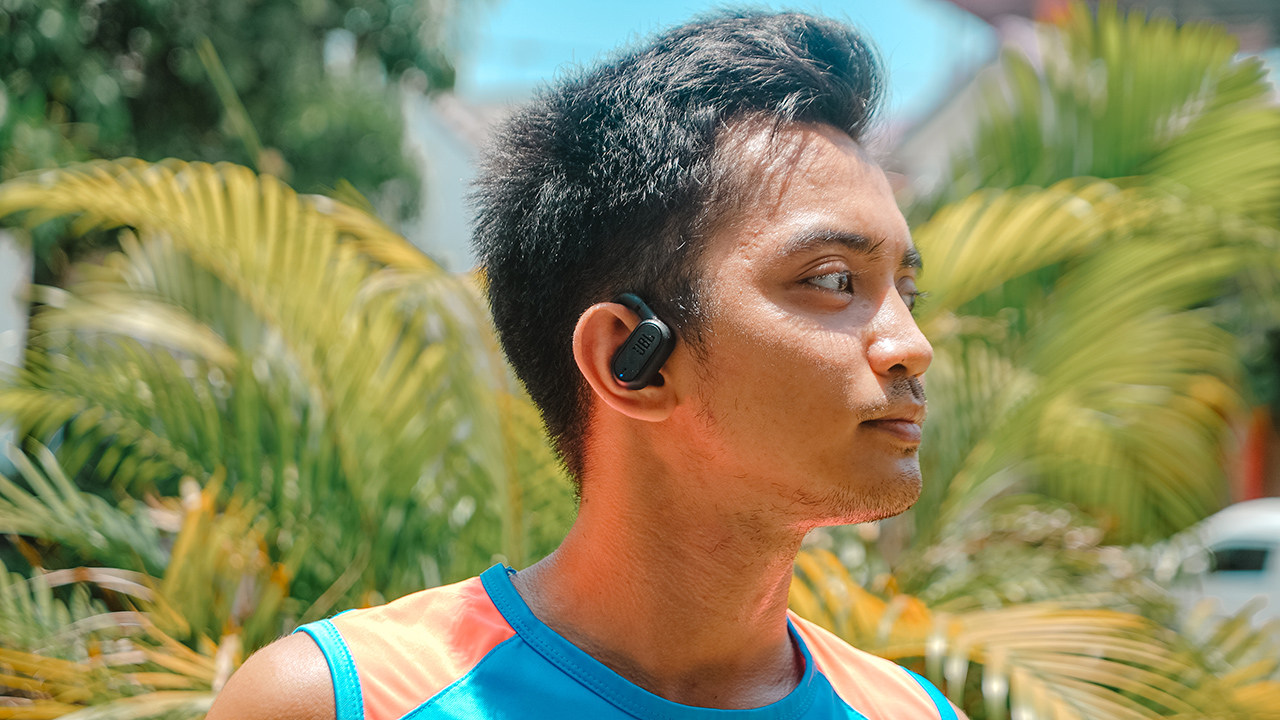
Running has been a form of meditation for most people. To some, it’s a time where your mind goes blank, allowing you to have a break from your stimulated mind.
For others, like yours truly, it’s a moment to sort out thoughts and emotions after having a preoccupied day. A common denominator between runners is doing the activity alone, accompanied only by their smartwatches, a hydration flask, and good music.
I’ve been using true wireless earbuds to accompany me on my runs, but the advent of JBL Soundgear Sense piqued my curiosity.
What is it like to use open-ear headphones when out for a run? To find the answers, I used the Soundgear Sense during my ongoing race season.
Take the long way home
As I put on mileage for my upcoming races, I have been required by my coach to add more slow runs to improve my aerobic base. That entails long, boring runs for an hour or two.
Imagine the agony of finishing a minimum of 10-kilometers by relying on your heart rate and not your pace. That was when I sought solace from the JBL Soundgear Sense.
I didn’t realize that having open-ear headphones would allow me to take on scenic and busy routes without worry that a car might hit me.
Unlike when I use true wireless earbuds that fit snugly in my ears, the Soundgear Sense are hooked and clipped on the curve of my ears without covering the ear canal.
This allowed me to hear my surroundings while still enjoying my favorite songs from Taylor Swift and BINI, a rising P-pop girl group.
Open but still private
Even if the Soundgear Sense has an open-ear design, rest assured that there’s zero sound leakage. JBL’s OpenSound technology made sure that the sound pressure is directed through waves towards the ears, while also reducing sound dispersion.
There’s a certain shame in having people find out whom you’re listening to. Maybe because you don’t intend to share the music you’re enjoying. But if you opt to share your jam, might as well have a Bluetooth speaker, right?
That’s why I liked the idea of keeping it open but still private — in relationships and my wearable. I get to enjoy “Pantropiko” and “Salamin, Salamin” by BINI all by lonesome, while still attuned to my surroundings.
It also helps that each earbud has a 16.2mm driver with a unique bass-enhancing algorithm. The sound allowed me to immerse myself in the songs I was playing, but still aware of the external noises of the streets. Somehow, the Soundgear Sense felt like a second, inner voice whispering thoughts through music.
Hybrid design for hybrid athletes
I don’t just run. I also lift on the same day right after running. Being a hybrid athlete allows me to prepare my body from the demands of multi-sports training and partaking on a Spartan race.
I like how the Soundgear Sense has a hybrid design that makes it apt for different type of workouts. Its adjustable earhooks are clipped perfectly, which doesn’t fall off even when I’m doing plyometrics. It’s also steadily in place even if I sprint and/or do some speed training.
Even when I’m heavily sweating, the Soundgear Sense didn’t slip off. With an IP54 rating, it’s dust-, splash-, and sweat-resistant.
Also, the way it’s designed is secured to fit on whatever activities you have, regardless of sweating. Except gymnastics and parkour, though.
The Soundgear Sense might fall off after you hang or flip from those extreme activities that require being suspended in the air.
For added security, there’s an included neckband inside the box. However, I hate having something dangling on my nape so I never used it.
Moreover, I couldn’t last more than an hour having it clipped even with a supposed hybrid design. It hurts my ears eventually, and I feel like someone was pinching my ears and I couldn’t do anything.
If I have runs for more than an hour, I’d opt not wearing both earbuds.
Easy connectivity
One thing I like about JBL is how easy it is to connect your wearables to your smartphones, be it an iPhone or an Android.
Once both devices are paired, flipping open the case will instantly connect the Soundgear Sense to your smartphone.
While running, I don’t have to constantly check my phone since the Soundgear Sense, along with my Garmin epix Pro (Gen 2), helps me stay connected. With just a single flick on the earbud, I can control my music, volume, and calls.
My friend, Betty, called me one time while I was out for an easy run and she barely realized I was running until I gasped for my breath when running on a steep incline. It’s convenient to have crisp and crystal-clear calls within your reach.
And to make it more convenient, the touch controls can be personalized to your liking. On the left earbud, it’s usually the volume control.
One tap and it increases the volume, while double tapping decreases it. When someone calls, you can double tap to respond or you can tap and hold to reject the call.
The right earbud uses the same call control, but it’s automatically set for playback control. You can switch earbuds depending on the gesture you prefer.
All of these customizations can be done using the My JBL Headphones app.
Definitely long lasting
I have had the Soundgear Sense for two weeks now, and both earbuds still have a half battery life from a single charge. As of writing, the left earbud still has 51% while the right earbud has 56%.
Thanks to its charging case, both earbuds keep recharging every time they’re stowed inside.
But if you’re wondering why the left earbud has a lower battery life, it’s not because I spend too much time watching adult-rated content.
A lot of times, I run with just the left earbud clipped on my ear to stay alert from my surroundings. Even with OpenSound technology, I tend to get lost in the music I’m listening to whenever I have both earbuds hooked.
Considering I’ve amassed more than 70km of running mileage for two weeks with almost 10 hours of running, the Soundgear Sense surprised me with its battery life.
I haven’t charged it since then, which made me wonder how fast it would really be, if I get to drain it down to zero and juice it back up to 100. Perhaps, stay tuned on my Instagram and TikTok accounts?
The Soundgear Sense is expected to let you listen wirelessly for up to 6 hours. You get an extended life of another 18 hours through the charging case. A quick 15-minute charge through the Type-C port gives an additional 4 hours of music.
Is this your GadgetMatch?
For an athlete, the JBL Soundgear Sense surely makes every run magical. The design and technology were innovated with runners in mind. The device integrates seamlessly to any type of active lifestyle.
It will boil down to preference, whether you enjoy an open-ear design clipped onto your ears or you’d enjoy an earbud blocking your ear canal.
As for me, I think I’ll switch and pick the Soundgear Sense to accompany me in my race season. It helps me immerse myself in good music, stay connected, while keeping me attuned to my surroundings. This ensures my safety when out for a run.
It’s easily a GadgetMatch for all types of athletes dedicated to fulfilling their training assignments. It’s also for fitness enthusiasts entering their “runnerist” era.
The JBL Soundgear Sense retails for PhP 9,499. It is available via JBL’s website and select, authorized retailers.
Reviews
realme 12+ 5G review: One month later
What is it like to spend a month with a midrange smartphone?

What is it like to spend a month with a midrange smartphone?
For someone spoiled with high-end, flagship smartphones, a watered-down experience terrifies me. I couldn’t fathom using just a midrange smartphone, even if I’m counted as a casual user.
But spending a month with the realme 12+ 5G gave me a new perspective on what midrange smartphones at 2024 can do.
Powerhouse at a fraction
A lot of times, I’ve used the realme 12+ 5G to play Mobile Legends: Bang Bang. I know, I know. It’s 2024 and I’m still playing the same old MOBA but it’s a game I know all too well that helps me de-stress after a long day.
See, I’m an athlete balancing my work and life. Sometimes, I just want to rot in bed while playing on my phone.
The realme 12+ 5G helped keep me sane thanks to its lag-free gameplay. Not once did I feel any heat or slowing down even while playing in an Ultra Graphics and Super High Frame Rate setting.
The Vapor Chamber Cooling System came into play, dissipating the heat so even if under heavy usage, the gameplay is still optimal.
Moreover, the realme 12+ 5G uses a MediaTek Dimensity 7050 chipset. When you combine this with a 12GB dynamic ram that’s expandable through your storage space, you won’t have to worry about a watered-down experience from using a midrange device.
The RAM can take up from 4GB up to 12GB to be re-allocated from the 256GB internal storage. Though, I only used 4GB since I didn’t feel the need to turn it up to the highest configuration. It’s already smooth even when multi-tasking.
It may not be as smooth as the flagship smartphones I held, but it’s enough particularly for people who just needs a smartphone they can use for their everyday lives. However, if you want a midrange device dedicated for an even more intensive gameplay, I’d suggest looking elsewhere.
Daily companion for viewing, listening
When I was on my way home from my training, I drove past a busy road in Pasig City where vendors are in the streets, bystanders are frolicking, and loafers gossip while taking space through the plastic stools they sat on spread out near the sidewalk.
What do they have in common? Smartphones. There was a realization that the Filipino masses rely on their devices to be entertained and connected.
I have a feeling that if I wasn’t a multi-passionate person with an insanely hectic schedule, I’d bury my head on a smartphone, too.
This is where having a spectacular audio-visual performance comes into play, especially for budget and midrange devices. Luckily, the realme 12+ 5G has a 120HZ Super AMOLED Display and Dual Stereo Speakers.
It’s one of the reasons why I started playing Mobile Legends: Bang Bang again when I was decompressing for the day.
Aside from doomscrolling on TikTok, I just like it when the display is fluid, vivid, and smooth while the audio can be as loud and immersive. Unlike most midrange smartphones, the audio-visual performance is always a hit or miss.
Sometimes, they have an excellent screen while the audio suffers, or vice-versa. The realme 12+ 5G just have it both.
Capture it, remember it
The realme 12+ 5G uses a 50-megapixel SonyLYT 600 OIS Portrait Camera, an 8-megapixel 112° wide-angle lens, a 2-megapixel macro sensor, and a 16-megapixel selfie camera on the front.
I used the smartphone to capture photos I send to my loved ones. From selfies, coffee runs, hotel visits, group photos, food shots, and just anything and everything in my life.
The quality for low-light shots is a hit or miss, but for photos taken during daytime and with good lighting? It’s just spectacular.
Here are some sample photos to look at:
Portraits & Selfies
Food
Sceneries
Everyday photos
Real on reliability
The realme 12+ 5G’s battery capacity is just *chef’s kiss*.
Its ability to retain its battery life even on standby is just incredibly helpful for someone who keeps forgetting to charge his devices.
The realme 12+ 5G lasts long enough when out for the day, and even if you spend a lot of hours playing games and doomscrolling.
One time, I played Mobile Legends: Bang Bang for three hours straight from a full charge, and I still had enough juice to keep playing. That 5000mAh battery surely is a lot of juice that doesn’t drain easily. I had to be the one to give up playing since it hurt my eyes already.
Charging it with 67W SuperVOOC, the realme 12+ 5G gets full charge in less than an hour. This is why even if I forget to charge it at night, I just have to plug the charger in the USB-C port while I was taking a bath and prepping for work.
Could’ve been a real premium
Aside from its performance and capabilities, the realme 12+ 5G comes with a strong and beautiful exterior. The unit I have came in Pioneer Green, resembling an emerald-touch of old money.
Without a plastic case, it’s soft, feels luxurious, and easy to hold even with a boxy frame. At a glance, it’s even more beautiful with its luxury watch-inspired design, thanks to designer Ollivier Savéo.
For a midrange device, realme has a knack for making its devices look and feel sophisticated. Furthermore, it’s dust and splash proof with its IP54 rating. It’s a win-win, right? Strong and pretty at the same time.
My only issue would be the realme UI 5.0 based on Android 14 that’s packed with bloatware. Look- and feel-wise, the realme 12+ 5G would be a premium stunner, even with its camera, audio-visual, and battery performance.
But the UI design along with the unnecessary bloatware made it cheap and annoying to look at.
Is this your GadgetMatch?
The realme 12+ 5G delivers what you’d expect out of a midrange smartphone. It’s premium-looking, long-lasting, offers reliable performance, and captures vivid portraits and pictures.
It’s easily a GadgetMatch for casual users requiring enough power and juice on a device that looks pretty and strong. If the realme 12 Pro+ 5G is a midrange marvel, consider the realme 12+ 5G almost the same, but at a lesser cost.
It retails for PhP 19,999 for the 12GB+256GB variant, while the 8GB+256GB unit is priced at PhP 17,999.
-

 Accessories2 weeks ago
Accessories2 weeks agoApple Vision Pro Review: Two Months Later
-

 Features5 days ago
Features5 days agoFortify your home office or business setup with these devices
-

 Gaming1 week ago
Gaming1 week agoThe Rogue Prince of Persia looks like an ultra-colorful roguelite
-

 Events1 week ago
Events1 week agoStellar Blade: PlayStation taps cosplayers to play Eve for game’s launch
-

 Gaming1 week ago
Gaming1 week agoStar Wars Outlaws release date revealed
-

 Philippines2 weeks ago
Philippines2 weeks agovivo Y100 to release in Philippines on April 27
-

 Accessories1 week ago
Accessories1 week agoLogitech unveils G Pro X 60 gaming keyboard: Price, details
-

 Deals2 weeks ago
Deals2 weeks agoSamsung Awesome April: Deals on Galaxy A series

